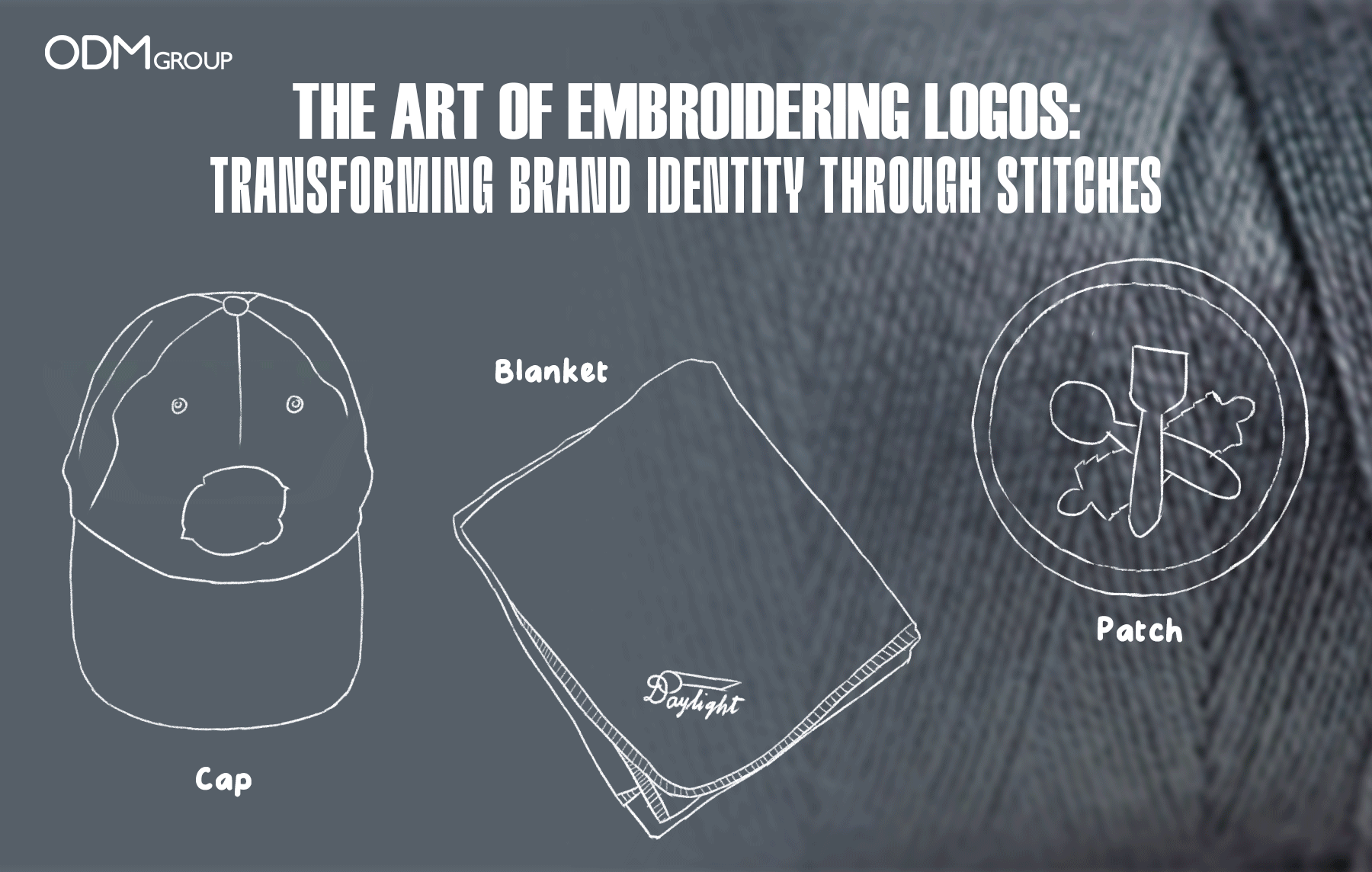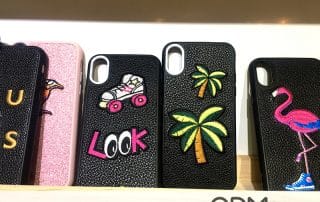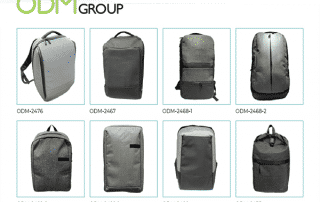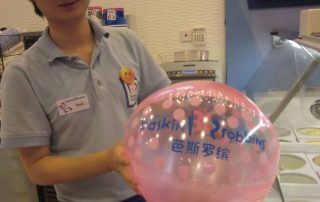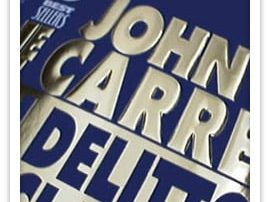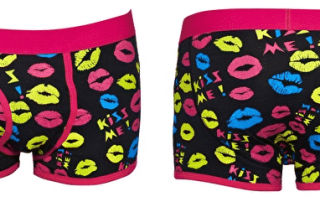Embroidery has long been revered as a timeless art form, adding an elegant and personalised touch to clothing and fabric. When it comes to logos, embroidering them onto garments can bring a sense of professionalism and brand recognition.
So, whether you’re a business owner looking to create custom embroidered merchandise or an individual seeking to add a personal touch to your clothing, understanding how to embroider logos is a skill worth acquiring.
In this blog, we’ll discover the ins and outs of logo embroidery, from the basics of stitching techniques to choosing the right materials.
Logo Embroidery Essentials
Understanding the essentials of the embroidery process will increase your chances of success. Here’s a breakdown of the stages required in personalising clothing using embroidery.
What is embroidery?
Embroidery is embellishing cloth with thread sewn directly into garments, resulting in distinctive, eye-catching designs. An embroidery pattern is a digital blueprint directing an embroidery machine to sew a certain design or picture.
This procedure enables the creation of personalised products such as polo shirts, dress shirts, jackets, hats, beanies, aprons, and workwear.
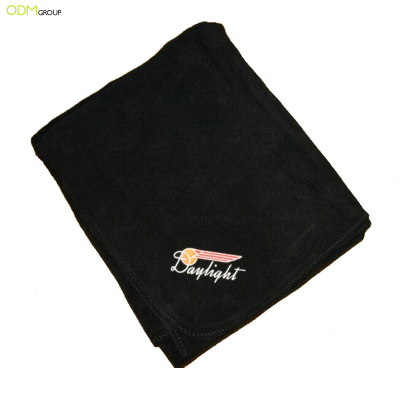
Modern manufacturing processes, such as those employed by The ODM Group, optimise digital artwork, design specific stitch patterns, and integrate files into automated equipment, allowing for large volume and quick turnaround times.
How to Embroider Logos?
Embroidery is a fantastic method for making your logo pop and infusing your clothing, bags, hats, and other items professionally. However, transforming your logo into an embroidery pattern requires careful consideration and expertise.
It begins with a quality design provided by you and progresses through a series of steps that demand knowledge and experience to make the appropriate design choices.
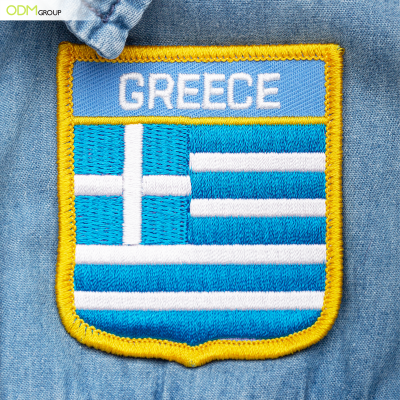
Your logo must be reduced in size because the embroidered print spaces on ODM items are modest. The size is determined by the product and its location in the design. Some goods only have one design positioning option, whilst others have several.
Check out the embroidery selection if you have a huge print space. Follow the file instructions on the product page to ensure the proper size, fonts, colours, and arrangement of information.
When creating a logo for embroidery purposes, adhering to specific file requirements is paramount to ensure optimal results.
Let’s delve into the key considerations for logo file preparation: embroidery file format, print file resolution, and logo digitization.
-
Embroidered File Type
The ODM Group supports designs in JPG and PNG formats for direct-to-garment printing or sublimation. However, embroidery files should be saved in PNG or PDF format. JPG files may not generate the intended logo, have a backdrop, or increase stitch count. PNG files are the best choice because they do not have backdrop or stitch count difficulties.
-
Embroidered File Quality
For an organised layout, make sure your embroidery file has the appropriate resolution, which is measured in DPI. A higher DPI yields more detailed findings, whilst a lower DPI produces lesser-quality results. Avoid surpassing 300, since this will merely increase file size.
-
Logo Digitisation
Before embroidering, your logo must be scanned with embroidery digitising software. The ODM Group will transform your design into an embroidery-compatible file. You do not need to understand how to use the program since it maintains file compatibility.
Another crucial consideration is the selection of colors for your logo. At The ODM Group, we offer a variety of options to accommodate different color needs.
Embroidery is a superior printing process since it can provide more detail than DTG or sublimation printers. To produce a simple and detailed logo, eliminate microscopic details as well as frequent embroidery blunders.
-
Minor details
To guarantee that your logo design is readable and embroidery-friendly, keep the line width and letter height consistent with our guidelines. Text should be at least 0.25″ in height and 0.05″ thick, with lines having a minimum thickness of 0.05″. This will keep embroidery machines from producing untidy results.
-
Distressed graphics
Distressed images may not be suitable for embroidery owing to flat embroidery and running stitches, which may result in the loss of details of textured elements and fail to produce the intended textured effect.
-
Photographic photos
Due to the complexity of pictures, machine embroidery cannot fully stitch them, needing extensive image simplification.
Our embroidery machines offer 5 distinct stitch types: flat embroidery, tatami fill, satin stitch, run stitch, and 3D puff embroidery. Let’s explore each and understand their unique characteristics.
-
Flat Embroidery
This technique employs various decorative stitches to create sleek designs on flat surfaces, ideal for thicker fabrics and well-suited for embroidered logos.
-
Tatami Fill Stitch
Utilising short, straight stitches, the Tatami fill creates dense patterns, perfect for filling large areas and easily combinable with other stitches like satin.
-
Satin Stitches
These decorative stitches produce smooth areas on fabric, often used for outlining objects or crafting curved shapes such as flower petals, frequently paired with fill stitches.
-
Run Stitch
A simple series of straight stitches, the run stitch adds intricate details and embellishments to designs, ideal for small elements.
-
3D Puff Embroidery
While not a stitch type per se, 3D puff embroidery creates a three-dimensional effect by adding foam underlay, enhancing designs on heavy fabrics like caps, though it requires slightly longer production time due to its complexity.
For embroidery, choose clean, bold, and simple fonts, avoiding thin, distressed, or intricately detailed styles. Avoid serif and script fonts for small text sizes, keeping text no smaller than 0.25 inches tall. Avoid thin strokes or use a “Running Stitch” outline during digitization to maintain stroke integrity.
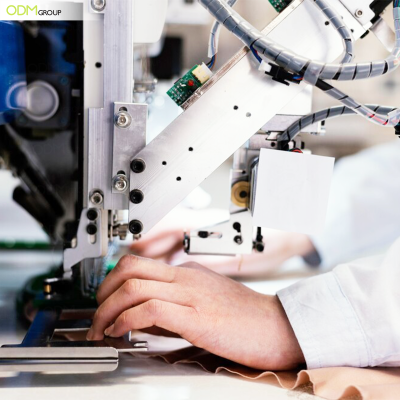
Embroidery works well on structural objects such as hats, coats, and bags, but unusual items may necessitate special size or manufacturing concerns. Canvas, denim, cotton fleece, and cotton blends are good examples of thicker, more durable materials. Sweatshirts and hoodies are appropriate options, but not thinner, lighter, or delicate materials. Custom embroidered patches are an option.
Importances of Having Embroider Logos
Embroidery patterns offer several benefits, making them a popular choice for adding decorative elements to various items. Here are some of the key advantages:
Customization
Embroidery patterns allow for a high level of customization. They can be tailored to suit specific designs, colours, and sizes, enabling businesses and individuals to create unique and personalised products.
Durability
Unlike printed designs that can fade or wear off over time, embroidery patterns are stitched directly into the fabric, ensuring long-lasting durability. This makes them ideal for items that will undergo frequent use and laundering.
Professionalism
Embroidery patterns lend a professional and polished appearance to garments, accessories, and promotional merchandise. The intricate stitching adds a touch of sophistication, enhancing the overall aesthetic appeal of the item.
Versatility
Embroidery patterns can be applied to a wide range of materials, including fabrics like cotton, polyester, and denim, as well as non-textile items such as bags, caps, and towels. This versatility makes them suitable for various applications across different industries.
Brand Recognition
Incorporating an embroidered logo or design onto products helps to strengthen brand recognition. The distinct and tactile nature of embroidery makes logos stand out, increasing visibility and leaving a lasting impression on customers.
Perceived Value
Items featuring embroidery patterns are often perceived as higher quality and more premium compared to those with printed designs. This perception of value can positively influence purchasing decisions and enhance brand reputation.
Artistic Detail
Embroidery patterns allow for intricate and detailed designs that may not be achievable through other methods. From intricate motifs to elaborate lettering, embroidery offers endless creative possibilities for expressing artistic flair.
The Story of Ralph Lauren’s Embroidered Logos
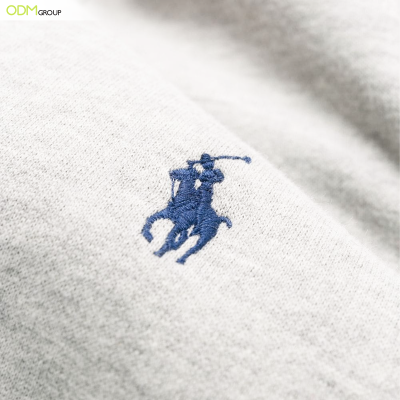
Ralph Lauren, a leading American luxury fashion brand, uses embroidery to create iconic logos like the polo player and “RL” initials, symbolizing prestige and quality. The company ensures flawless execution of embroidery, using premium materials for durability and aesthetic appeal.
Customization options elevate exclusivity, while the recognizable logos serve as symbols of brand recognition and luxury. Ralph Lauren solidifies its leadership in embroidered logos through consistent quality delivery.
Discover more branding options for your merchandise…
DTF stands for Direct-to-Film, a modern printing technique revolutionizing the customization industry. It involves transferring designs directly from a specialized film onto various surfaces, such as garments, textiles, and other materials.
3D resin printing, also known as stereolithography (SLA), is a form of additive manufacturing that has become increasingly popular in recent years, with various applications in manufacturing, healthcare, and design.
Heat press, also known as heat transfer printing, is a technique that involves applying heat and pressure to transfer a design or image onto a substrate. It utilizes a heat press machine, which uses controlled heat and pressure to bond the design onto the material’s surface.
Lenticular printing is a printing technique that combines two or more images together which can be viewed from different angles. This creates an illusion that the image moves as people view it from different angles.
Key Takeaways…
Mastering embroidery logos allows brands to enhance their visibility and leave a lasting impression. By understanding stitching techniques, selecting appropriate materials, and exploring color options, you can create unique embroidered logos for apparel, accessories, or promotional items. This guide provides a solid foundation for success, transforming ordinary items into marketing assets that express your brand’s identity and quality.
How to Embroider Logos FAQs
All you need to know about job how to embroider logos!
What types of fabrics are suitable for embroidering logos?
Fabrics like cotton, polyester, denim, and twill are commonly used for embroidering logos. Choose a fabric that is stable and won't stretch excessively during embroidery.
How can I ensure the placement of embroidered logos is accurate and consistent?
Use templates or marking tools to indicate the desired placement of logos on your garments or products. Take your time to ensure accurate positioning before starting the embroidery process.
Can business embroider logos on different types of products besides clothing?
Yes, business can embroider logos on various products such as hats, bags, towels, and patches. Ensure that the product's material and shape are suitable for embroidery.
